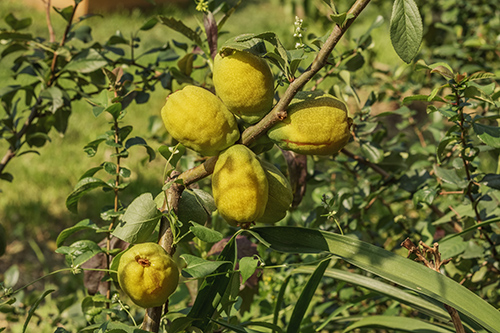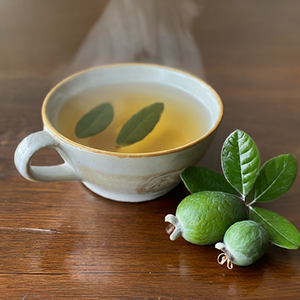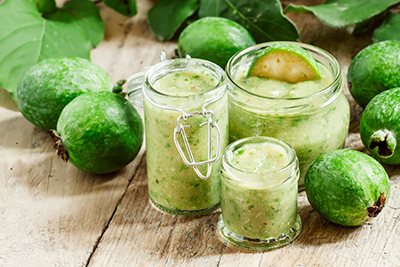Contents
There are many feijoa benefits when it comes to health. However, before we learn about them, let’s get to know this fruit a little more. The feijoa is related to the guava; both belong to the same botanical family. Its pulp, cream or salmon-colored, is soft and gelatinous, and its flavor is reminiscent of pineapple. Although the center of the fruit is filled with seeds, they are delicate and barely noticeable when eating them.

Feijoa Scientific Facts
- Scientific name: Feijoa sellowiana Berg.
- Scientific synonym: Acca sellowiana (Berg.) Burret.
- Other names: [Pineapple] guava, Guavasteen.
- French: Goyave de Montevideo.
- Spanish: Feijoa, guayaba-piña.
- German: Feijoa.
- Description: Fruit of the feijoa tree of the botanical family Myrtaceae that reaches 7 meters in height.
- Environment: The feijoa comes from southern Brazil, Argentina, and Uruguay. Its cultivation has spread to California, Florida, and New Zealand. It has been recently introduced to the Mediterranean region from Israel to Spain. Despite being a tropical tree, it resists adverse climates and poor soils.
Feijoa Benefits

The feijoa contains small amounts of fat, protein, and carbohydrates in a more significant percentage. It is rich in vitamin C (about 20 mg.100 grams), although much less than the guava (183 mg/100 grams). It also contains small amounts of B-group vitamins and minerals. Its composition is remarkable for these nutrients.
FOLATES: The feijoa is among the richest fresh fruits in these substances, essential for forming blood cells. Lack of folates during pregnancy can lead to anemia and congenital fetal disabilities.
IODINE: This fruit’s trace element content (50 to 100 ug/100 grams) is more significant than other fruits and approximates saltwater fish (150 to 350 ug/100 grams).
The feijoa is particularly indicated in the following cases:

PREGNANCY, because of its rich supply of folates and iodine, which are very important during gestation.
GOITER is caused by hypothyroidism when it results from insufficient iodine in the diet.
CONSTIPATION, because of its richness in vegetable fiber.
How to Use and Prepare Feijoa
- RAW: The fruit must be peeled. Some varieties are somewhat coarse, particularly when they are not completely ripe.
- CULINARY PREPARATIONS: The feijoa lends itself well to preparing juices, compotes, and jams.
DISCLAIMER: All content on this website is presented solely for educational and informational objectives. Do not rely on the information provided as a replacement for advice, diagnosis, or treatment from a qualified medical expert. If you are pregnant, nursing, or have any preexisting medical concerns, talk to your doctor before using any herbal or natural medicines.
REFERENCES
- George D. Pamplona-Roger, M.D. “Encyclopedia of Foods and Their Healing Power.” George D. Pamplona-Roger, M.D. Encyclopedia of Foods and Their Healing Power. Trans. Annette Melgosa. Vol. 2. Chai Wan: Editorial Safeliz, 2005. 263. Print. [feijoa benefits]
- Nutrients Journal – https://www.mdpi.com/2072-6643/10/10/1488
- National Institutes of Health (NIH) – https://ods.od.nih.gov/factsheets/VitaminC-HealthProfessional/
